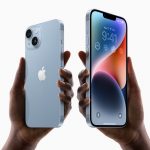Last Updated on June 16, 2024 by Dtechunt
It has now been made available to everyone after Google unveiled Android 13 in May. The new Android 13 version has only been made available for Pixel phones so far, but it will soon be made accessible for other Android phones. Numerous features are included with the Android 13 for tablets as well as for phones. Some of the features that users will get include the ability to copy text and media from one Android device and paste it to another with just one click.
In this blog, let’s go through Android 13’s features and its release date.
What is Android 13?
Android 13 (codename Tiramisu) is Google’s mobile operating system for 2022. This newest platform iteration debuted after four beta cycles and a preview release in February 2022. Tiramisu has been tested by Android developers since then, and it went live on August 15th with a stable release and features. It comes about a year after the public release of Android 12.
Android 13 Release date
On August 15, 2022, Android 13 was formally released, which was earlier than normal. The deployment timetable for Android 13 appeared to be quite simple until developer previews started to surface in February of this year. It appears like Google somewhat overshot the mark to have Android 13, fully ready by the time the Pixel 7 is released.
Significant Features Of Android 13
Google has put more of an emphasis on privacy and security measures. In general, Google is adding all the new features to enhance the overall user experience and performance of the Android device. Some of the changes are visible, but the majority are taking place behind the scenes and are not immediately visible to users.
So, let’s go through some of the significant features of Android 13 that everyone should know.
-
Improvements to RCS Messaging
Google has been working with carriers to transition from short messaging service (SMS) to Rich Communication Services (RCS), which offers significantly greater privacy features in messages will al, including end-to-end encryption for one-on-one talks. Group discussions so are secured later this year. Apart from offering privacy, RCS also offers greater file-sharing capabilities and higher-quality photo sharing.
-
UWB assistance
A mobile smartphone may now double as a car key and a device finder thanks to a new technology called ultra-wideband (UWB), which also aids Bluetooth and NFC connections. The only drawback of UWB functionality in the past was the requirement that the device has a built-in UWB antenna, which the Pixel 6 Pro possesses.
-
User experience
Dialog windows have undergone minor adjustments to better match the design language, such as the addition of the Internet toggle. The media player has had a facelift as of Developer Preview 2, utilizing the album cover as a backdrop and adding more user controls. Silent mode fully turned off vibration in the early previews, including haptics.
-
Split screen
It is now able to utilize other applications and the phone launcher while maintaining split-screen mode, and split-screen apps will remain linked together in the Overview menu. Split Screen mode now remains despite app changes. A notification can open in a split screen view by being long-pressed and dragged. Both phones and tablets support this capability.
-
Media playback handoff
To compete with the iPhone and HomePods, Android may soon receive its own media handoff function. If you don’t already know, you can touch your iPhone on a HomePod mini to transfer media to it. If the information from Android Police is reliable, Android 13 could support “Media TTT,” also known as media tap-to-transfer. This would enable you to transmit media playback from your phone to another device, such as a Nest speaker.
-
Permission for Notifications at Runtime
With the addition of features like Notification Importance and Notification Channels in earlier versions of Android, Google attempted to lessen the annoyance of push notifications from every app you’ve installed. You might turn off some notification channels, such as marketing, while enabling others, such as delivery updates. For certain applications, you may even completely disable alerts.
-
Clipboard editor overlay
Google has released a useful new clipboard function. A clipboard overlay preview will show at the bottom of the screen when you copy text, a link, or an image. The copied content is included in the preview, which also has an edit option in case you wish to make a fast change. With this new feature, as soon as you copy an address, Google Maps intent will appear next to the edit button. The same is true for copied phone numbers and URLs.
-
Android Photo Picker
The Android 13 update has included iOS-like picture selection choices. Instead of granting an app access to your whole picture collection, this new feature allows you to choose which photographs and videos the app may access. Even yet, Android 13 doesn’t have this function exclusively. On the majority of devices running Android 11 and higher that receive Google Play system upgrades, the photo picker capability is working.
-
Bluetooth hearing aid protocol
Users will benefit from decreased energy consumption, simultaneous streaming to numerous headphones and speakers, complete support for Google’s new Bluetooth hearing aid protocol, and better audio quality with this. As a result, hearing aids will have more dependable connections to Android than they did in earlier iterations.
By doing this, consumers will consume less energy while still receiving the same audio quality, be able to broadcast to numerous headphones and speakers at once and receive full support for Google’s new Bluetooth hearing aid protocol.
-
Predictive Back Gesture
This new gesture for Android smartphones, tablets, and foldable has been introduced as a part of Beta 2. Users will be able to see the destination or other outcome of a back gesture before they fully complete it if this feature is fully deployed, giving them the option to continue or stay in the current display. Using the predictive back gesture, for instance, might provide a moving preview of the Home screen hiding behind your app.
-
Emergency SOS Expansion
Technology and phones are essential in an emergency. Although we sincerely hope you’ll never need to call for assistance, if you do, your phone will be really helpful in that case. To do this, Google released Emergency SOS with Android 12, enabling you to communicate with a reliable individual and distribute emergency information without having to unlock your phone. With Android 13, this feature will be enhanced to support Wear OS watches.
The Bottom Line
Finally, concluding this blog, we can say that more of your favorite devices, including those from Samsung Galaxy, Asus, HMD (Nokia phones), iQOO, Motorola, OnePlus, Oppo, Realme, Sharp, Sony, Tecno, Vivo, Xiaomi, and others, will receive Android 13 later this year. For more updates on information about the technology, stay tuned to DTechunt.



